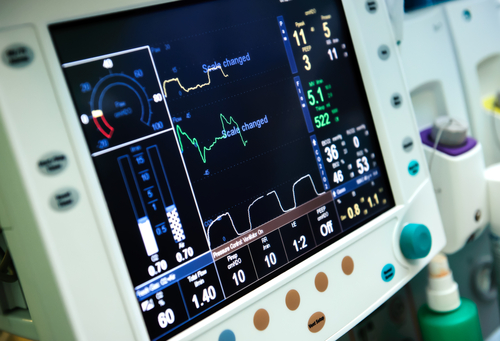New Pulmonary Arterial Hypertension Study Shows ECG Abnormalities Evolve As Disease Progresses

 Adriano Tonelli and colleagues at the Cleveland Clinic in Ohio have found a number of electrocardiography (ECG) variables that evolve between diagnosis and death in individuals with pulmonary arterial hypertension (PAH) that warrant further investigation. Currently, the medical community does not recommend an ECG for PAH diagnosis.
Adriano Tonelli and colleagues at the Cleveland Clinic in Ohio have found a number of electrocardiography (ECG) variables that evolve between diagnosis and death in individuals with pulmonary arterial hypertension (PAH) that warrant further investigation. Currently, the medical community does not recommend an ECG for PAH diagnosis.
Fifty patients participated in the study, of which 39 had an ECG performed at the time of diagnosis. Researchers found that 7.7% of these patients had normal findings, however, none of these patients had normal ECG findings close to the time of death (median of zero months before).
[adrotate group=”4″]
The average age of these patients was 58, and they died a median of 40 months after PAH diagnosis. Forty-two percent died as a direct result of right heart failure or sudden death.
Researchers report that there were 11 changes on ECG between diagnosis and close to death. Statistically significant was heart rate, which rose from 83 beats to 89 beats per minute. The QRS frontal axis increased from 97 to 112 degrees. The R wave amplitude in D1 decreased from 0.46 to 0.30mV. The R to S amplitude ratio of at least 1.0 in lead V1 rose from 48.7 percent to 74.0 percent and a negative T wave in the inferior leads rose from 30.8 percent to 60.0 percent.
A general progression over time was observed with ECGs performed between diagnosis and death. At a median of 27 months before death, intermediate results were observed for most parameters. Right ventricular hypertrophy progression between diagnosis and death varied according to the criteria used. Hypertrophy increased from 85 percent to 100 percent according to the Butler criteria. However, it did not significantly increase (85 percent to 88 percent) according to the World Health Organization (WHO) criteria.
[adrotate group=”3″]
Patients who died of pulmonary arterial hypertension and those who died of other causes both demonstrated similar ECG findings close to death except for a higher rate of right ventricular hypertrophy, by two definitions and larger R waves in the V2 lead among those who died of PAH. Researchers conclude, “Alone or in combination, these electrocardiographic parameters need further evaluation to identify whether they can be useful biomarkers of poor prognosis in PAH.”







